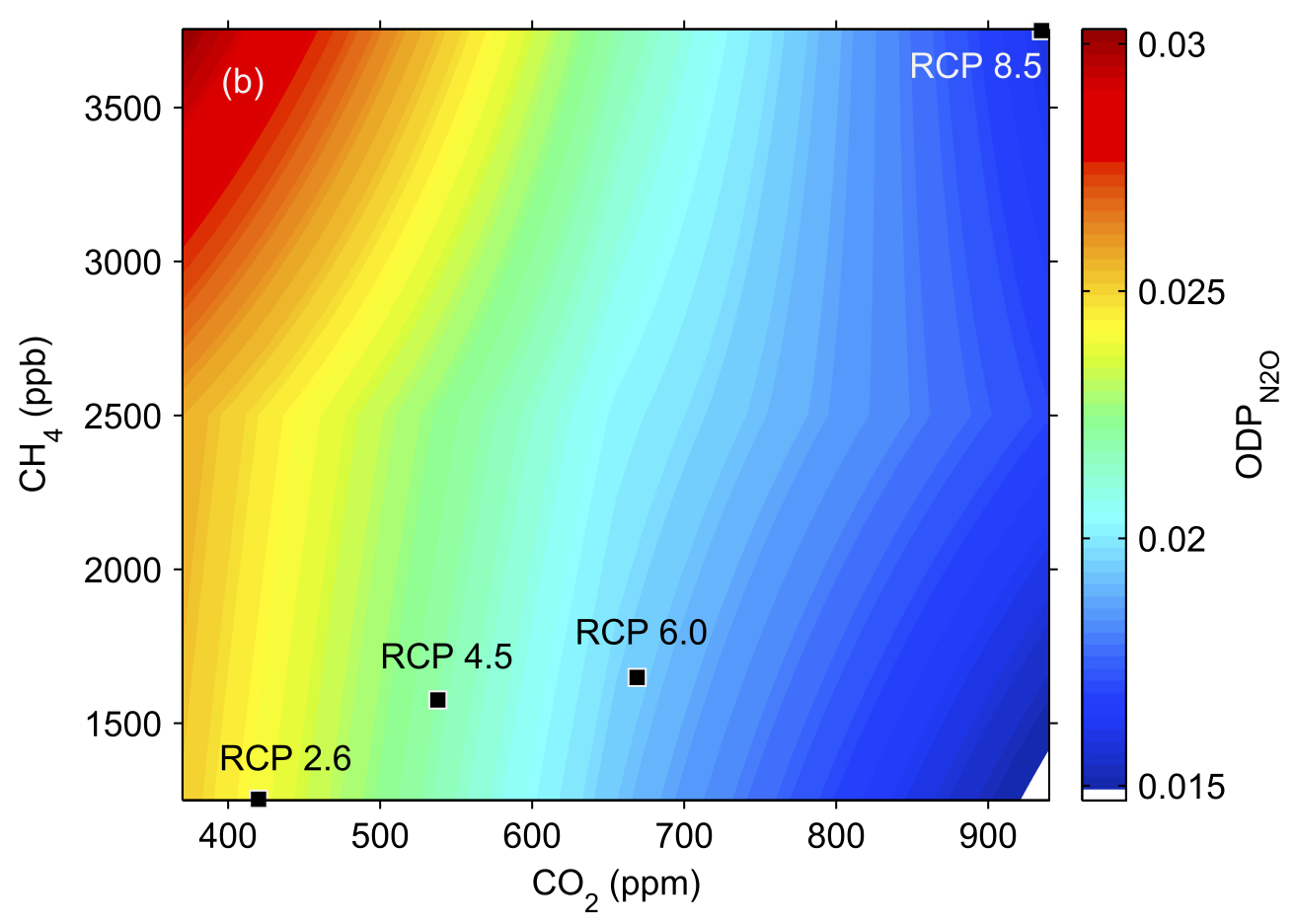Changing Ozone Depletion Potential
The changing Ozone Depleting Potential (ODP) of N2O in a changing climate
Nitrous oxide (N2O) is both a greenhouse gas and an ozone depleting substance with natural and anthropogenic sources. Its atmospheric concentration has increased significantly from pre-industrial times and is projected to continue to increase throughout the 21st century. At present, N2O is the dominant anthropogenic ozone-depleting substance emitted and given further increases in emissions projected for the future, it is important to understand how stratospheric chemistry will evolve to better understand how N2O will affect the ozone layer.

A metric frequently used to compare how much ozone a particular species destroys is the ‘ozone depleting potential’ (ODP). Using the SOCOL chemistry-climate model, we have shown that the ODP of N2O varies under different future greenhouse gas scenarios (external pageRevell et al., 2015call_made). Using a single value to estimate the future ODP of N2O is thus of limited use since a single value may not encompass the full range of possible ODP values.
